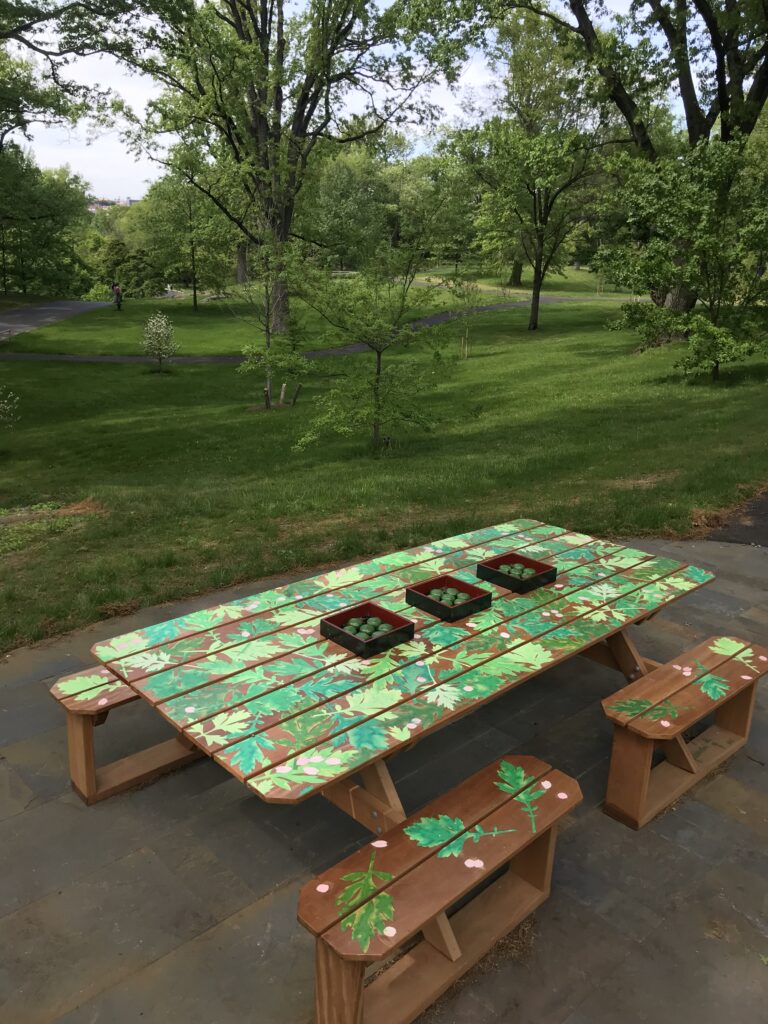Your cart is currently empty!
Mugwort Table

New York Botanical Garden
Summer 2022
I moved from Brooklyn to the Bronx a few weeks before the global pandemic. Social distancing at the new apartment paradoxically made me more connected to my roots, Japanese culture, as I was missing good food and good time I had with my family and friends. I couldn’t go to the Japanese grocery stores or the restaurants, so I really started to think about what I used to eat, what my parents cooked, what my grandmothers and aunt cooked, what ingredients in the local supermarkets could approximate what I couldn’t find. The limitations made me creative about cooking with what I could find and plating with Japanese aesthetics.
At the same time, I volunteered at Van Cortlandt Park removing non-indigenous plants and learned that many of these plants originated in Japan and East Asia: mugwort, burdock, Japanese angelica tree, Japanese knotweed to name a few. I was very shocked and conflicted. They came from so far away and now they are all over! These are plants Japanese people eat everyday and often use as medicine. However, we are removing them as they are troublesome and interfering with the ecosystem in North America.
I fantasized about all the great dishes I could make from these non-indigenous plants found here to share with people. Yomogi, the mugwort, is used as the main ingredient of my favorite treat, a very soft round chewy Japanese rice cake filled with red bean paste. As I told others how Japanese people boil mugwort and mix it with rice powder to make yomogi mochi, their covered faces lit up with excitement and I was happy to share the story. Mochi is now a popular treat in America. Not only does mugwort make beautiful earthy green tasty desserts, it has many health benefits and is often used as tea, bath, and moxa. There is another variation of dessert with mugwort called sasa dango, similar to yomogi mochi butbeautifully wrapped in bamboo leaves. I have a sweet memory of my grandmother bringing them whenever she visited us. My mother remembers picking mugwort and making sasa dango with her whole family when she was young in springtime. I remember her picking fresh spring mugwort leaves in a nearby grove and making yomogi mochi for me and my brothers.
This table is dedicated to yomogi, the mugwort and sweet memories of making and eating yomogi mochi and sasa dango with family and friends especially in spring time. The table is covered with hundreds of mugwort leaves and cherry blossom petals cut out of different shades of green and pink origami papers. In the center, will be a pile of yomogi mochi fashioned out of hardened rainproof clay, displayed in wooden bento boxes.
Like nature and our relationship to it, the table was designed to change over time and took on a beautiful weather induced changes as the summer progressed.
The table has been donated to the Van Cortlandt Park Alliance Education and Compost Garden site.
Let me know if you’d like to go visit it together for a picnic.